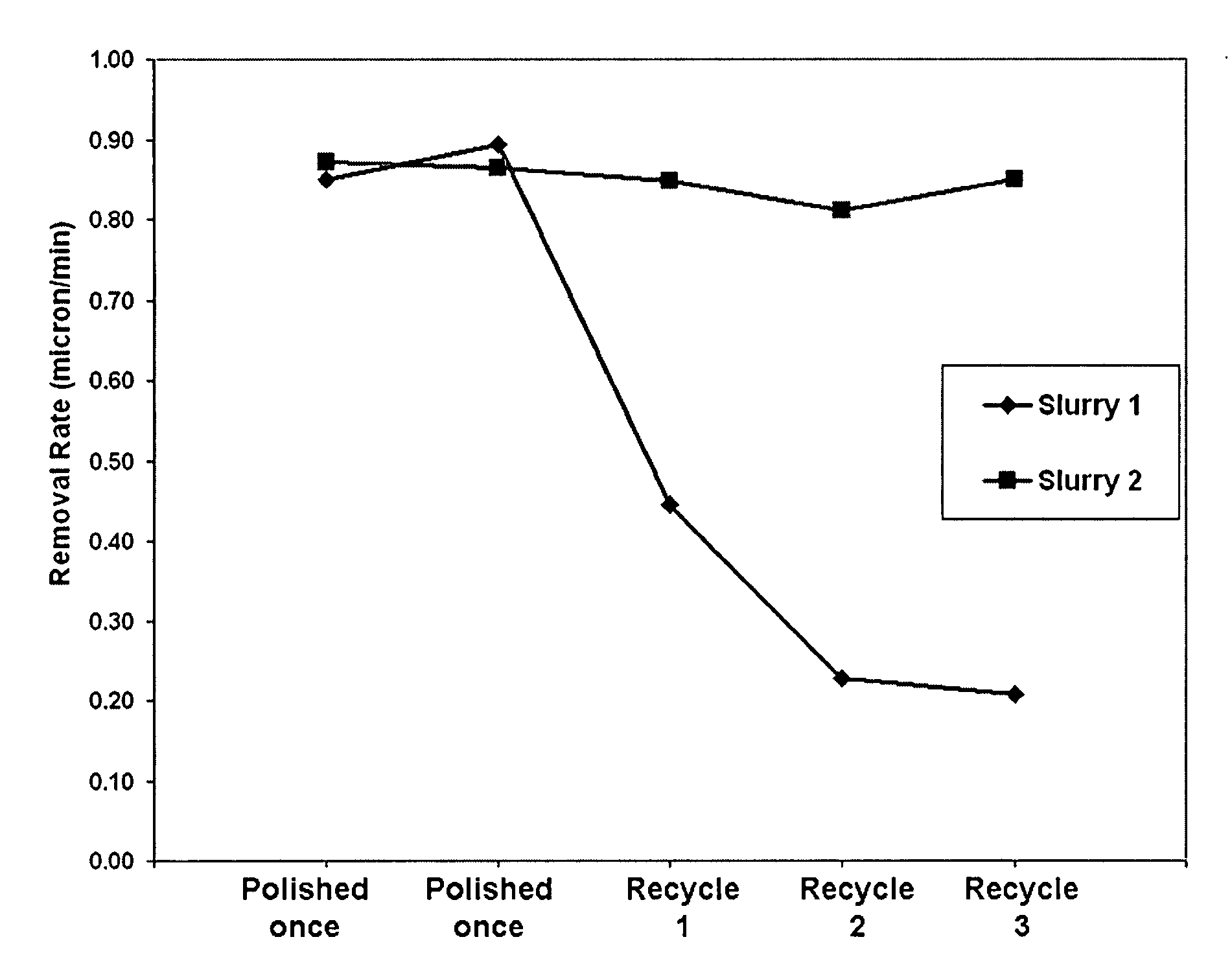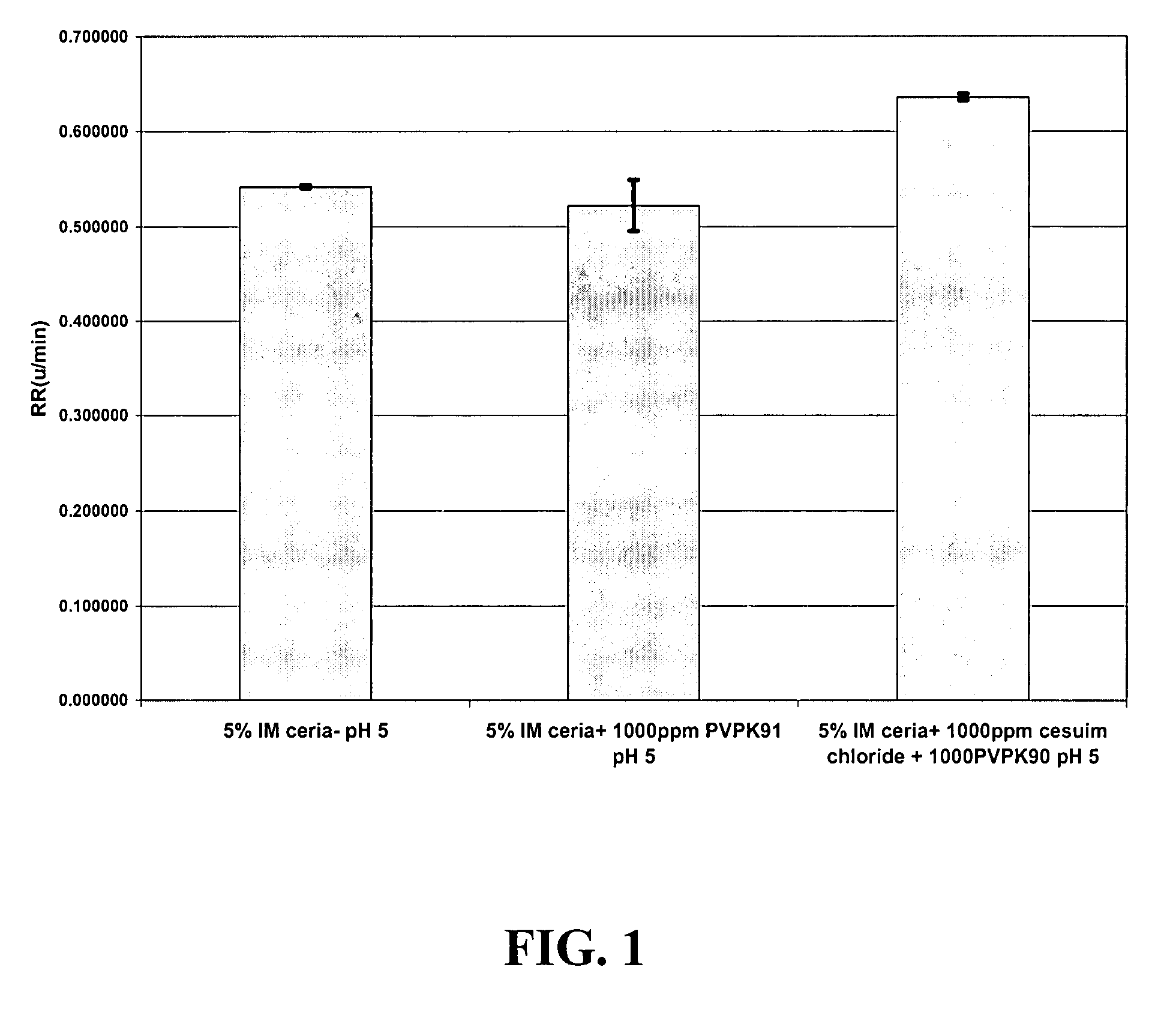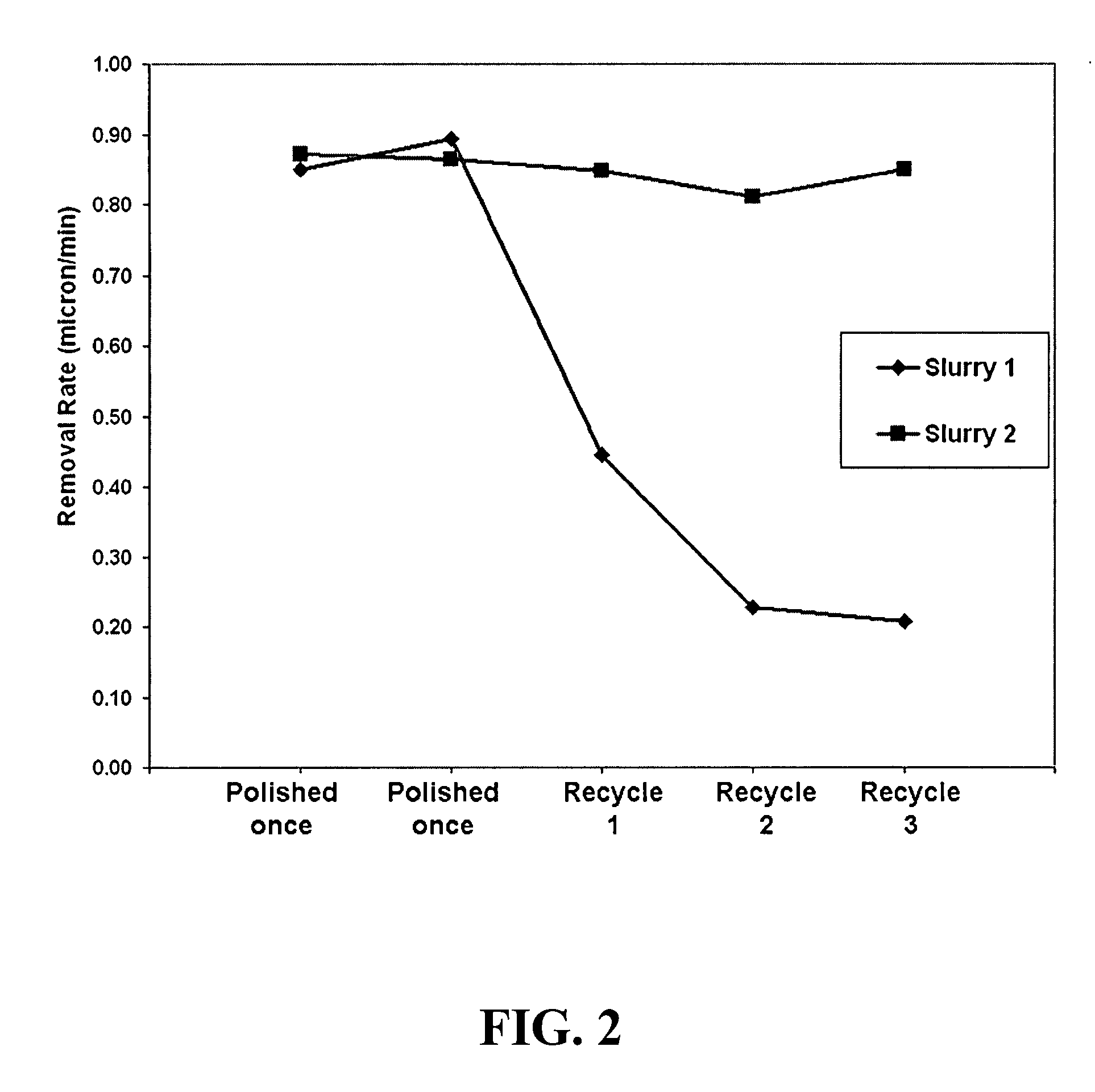Glass polishing compositions and methods
a glass substrate and composition technology, applied in the field of compositions and methods for polishing glass substrates, can solve the problems of low removal rate, inability to effectively eliminate pits, and relatively large cerium oxide particles forming macro-scratches and pitting on the glass surface, etc., to achieve convenient large-scale application adaptation, improve handling characteristics, and high glass removal rate
- Summary
- Abstract
- Description
- Claims
- Application Information
AI Technical Summary
Benefits of technology
Problems solved by technology
Method used
Image
Examples
example 1
[0037]This example illustrates polishing of glass substrates according to the present invention utilizing aqueous polishing compositions comprising cerium oxide, with PVP as a stabilizer. Two polishing compositions of the invention (Composition 1A and 1B) were prepared. Composition 1A contained about 5 percent by weight of the cerium oxide abrasive, about 1000 ppm of PVP (K90), and about 1000 ppm of cesium chloride, in water at pH 5. Composition 1B contained about 5 percent by weight of cerium oxide abrasive (mean particle size of about 500 nm, purity greater than or equal to 99.9% CeO2.), and about 1000 ppm of polyvinylpyrrolidone (K90) in water at pH 5. A comparative composition (Composition 1C) was also prepared, which contained about 5 percent of the cerium oxide abrasive in water without added salt or stabilizer.
[0038]The three compositions were used to polish 4 cm-by-4 cm LCD-grade glass test panels (alkaline earth metal oxide (MgO, CaO, SrO, BaO)—Al2O3—SiO2; Corning EAGLE® 20...
example 2
[0039]This example illustrates polishing of glass substrates with a polishing composition according to the present invention. Polishing Composition 2A was prepared, which contained about 10 percent by weight of cerium oxide abrasive (mean particle size of about 500 nm), and about 1000 ppm of DAXAD® 32, an ammonium polymethacrylate stabilizer available from Hampshire Chemical Corp., Lexington Mass., in water at a pH of about 8.5. A control composition (Composition 2B) was also prepared, containing about 10 percent by weight of the cerium oxide abrasive in water at pH 8.5.
[0040]Compositions 2A and 2B were used to polish 4 cm-by-4 cm LCD-grade glass test panels (Corning EAGLE® 2000) under the following polishing conditions: a down force of about 110 g / cm2, a slurry flow rate of about 100 mL / min, a carrier speed of about 85 rpm, and a platen speed of about 100 rpm. Each composition was used in two polishing runs as freshly prepared. Subsequently, an already used dispersion of Compositio...
example 3
[0041]This example illustrates polishing of glass substrates with polishing compositions of the present invention, in comparison to conventional cerium oxide-based polishing compositions having a purity of less than 99.9% CeO2. The compositions evaluated in this Example all had a pH of about 8 to 9, and an abrasive concentration of 10% except for compositions 3G and 3H, which utilized 1% by weight of the abrasive. The compositions were used to polish 4 cm-by-4 cm LCD-grade glass test panels (Corning EAGLE® 2000) under the following polishing conditions: a down force of about 110 g / cm2, a slurry flow rate of about 100 mL / min, a carrier speed of about 85 rpm, and a platen speed of about 100 rpm. The results are shown in Table 1. Compositions 3H, 3I and 3J are of the invention, while compositions 3A through 3G are comparative examples.
TABLE 1CompositionCeO2 PurityMean Part.Glass Removal Rate(at pH 8-9)(wt % CeO2)Size (μm)(μm / min)3A79.910.53B49.64.70.43C50.63.30.383D55.13.70.263E750.6, ...
PUM
| Property | Measurement | Unit |
|---|---|---|
| mean particle size | aaaaa | aaaaa |
| mean particle size | aaaaa | aaaaa |
| mean particle size | aaaaa | aaaaa |
Abstract
Description
Claims
Application Information
 Login to View More
Login to View More - R&D
- Intellectual Property
- Life Sciences
- Materials
- Tech Scout
- Unparalleled Data Quality
- Higher Quality Content
- 60% Fewer Hallucinations
Browse by: Latest US Patents, China's latest patents, Technical Efficacy Thesaurus, Application Domain, Technology Topic, Popular Technical Reports.
© 2025 PatSnap. All rights reserved.Legal|Privacy policy|Modern Slavery Act Transparency Statement|Sitemap|About US| Contact US: help@patsnap.com



